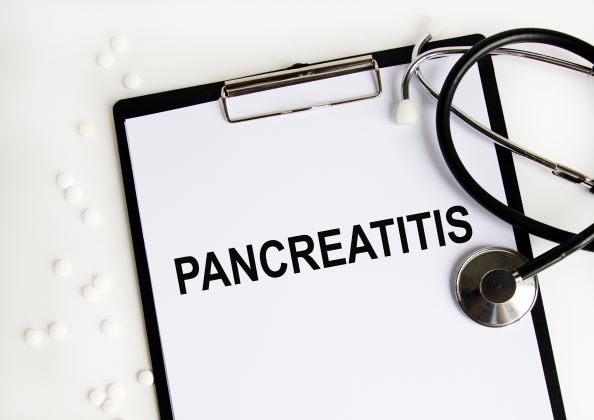Acute Pancreatitis and…What Else?

From an MS-DRG perspective, there are few disease processes that so commonly present with opportunities for CCs or MCCs that it is almost expected. Acute pancreatitis is one of those conditions.
But before we get into the myriad of complications that can accompany acute pancreatitis, let’s first address an issue that could call the diagnosis into question– many providers are unfamiliar with the clinical criteria for acute pancreatitis.
The revised Atlanta classification was published in 2012 and described the components necessary to make the diagnosis:
The diagnosis of acute pancreatitis requires the presence of two of the following three criteria:
- Abdominal pain consistent with the disease
- acute onset of persistent, severe, epigastric pain with tenderness on palpation on physical examination
- Serum amylase and/or lipase > 3 times the upper limit of normal (normal range of amylase and lipase levels can differ depending on the assay used)
- Characteristic findings on imaging studies
- contrast-enhanced computed tomography (CT), magnetic resonance imaging (MRI), or transabdominal ultrasonography
Often a clinician will diagnose acute pancreatitis in a patient with a mild lipase elevation and abdominal pain, with a normal-appearing pancreas on CT. While the diagnosis can be coded, it is advisable in such cases to consider querying the provider with an attachment describing the revised Atlanta criteria or escalating the case to your physician advisor.
When the diagnosis is properly established with 2 of the 3 revised Atlanta criteria present, consideration then turns to finding evidence of complications or co-morbid conditions that offer opportunities to move the DRG from 440 Disorders of the pancreas except malignancy without CC/MCC to
- 439 Disorders of the pancreas except malignancy w CC or
- 438 Disorders of the pancreas except malignancy w MCC.
Probably the most common complication is non-infectious SIRS (R65.10), a CC. Systemic inflammatory response syndrome is defined by the presence of >2 of the following features:
- Temperature change: Fever (core temperature >38.3oC or 100.9oF) or hypothermia (core temperature <36oC or 96.8oF)
- WBC change: Leukocytosis (WBC> 12,000) or leukopenia (WBC< 4,000) or >10% band forms with normal WBC
- Heart rate increase (tachycardia): >90 bpm or >SD above normal value for age
- Respiratory rate increase (tachypnea): RR >20 or pCO2< 32mmHg
Caveats:
- Caution: the above clinical indicators used ought not be explained by the presence of another process. For example, patients with acute pancreatitis frequently have severe abdominal pain, often in the range of 7-10/10 on a pain scale. This would certainly explain a modest increase in heart rate.
- Occasionally a patient with acute pancreatitis will initially be thought to have a possible infectious process (note: while pancreatic necrosis, phlegmon or pseudocysts may become infected, it is rare for acute pancreatitis to have an infectious etiology). Commonly, they will have at least one Sepsis-2 criterion that falls outside of the SIRS criteria (e.g., elevated lactate, CRP, glucose, etc.). When the infectious etiology is ruled out, the sepsis diagnosis is also negated. Many providers mistakenly assume that any sepsis markers would (by default) represent non-infectious SIRS. Only those listed above are proper SIRS criteria.
Other complications of acute pancreatitis that are either CCs or MCCs*
| CC | MCC |
| K86.3 Pseudocyst | R65.11 Non-infectious SIRS with organ dysfunction |
| J91.8 Pleural effusion in conditions classified elsewhere | J96.0- Acute respiratory failure (unspecified, hypoxic or hypercapnic) |
| R57.9 Shock, unspecified | J80 ARDS |
| N17.9 Acute kidney injury | R57.1 Hypovolemic shock or R57.8 Other shock (when d/c’d alive) |
| G93.41 Metabolic encephalopathy |
*these represent more severe cases of acute pancreatitis
Additionally, acute pancreatitis risk factors or common comorbid conditions offer opportunities for CC or MCC capture:
- F10.239 Alcohol dependence with withdrawal (CC)
- E44.1 Mild or E44.0 Moderate protein-calorie malnutrition (CC)
- E43 Severe protein-calorie malnutrition (MCC)
- E46 Malnutrition NOS (CC)
- Z68.4- BMI> 40 (CC), with code for overweight or obesity such as E66.01 (Severe/morbid obesity)
In closing, whenever a patient is admitted with acute pancreatitis, there is a reasonable probability of uncovering other impactful diagnoses by asking, “what else?”